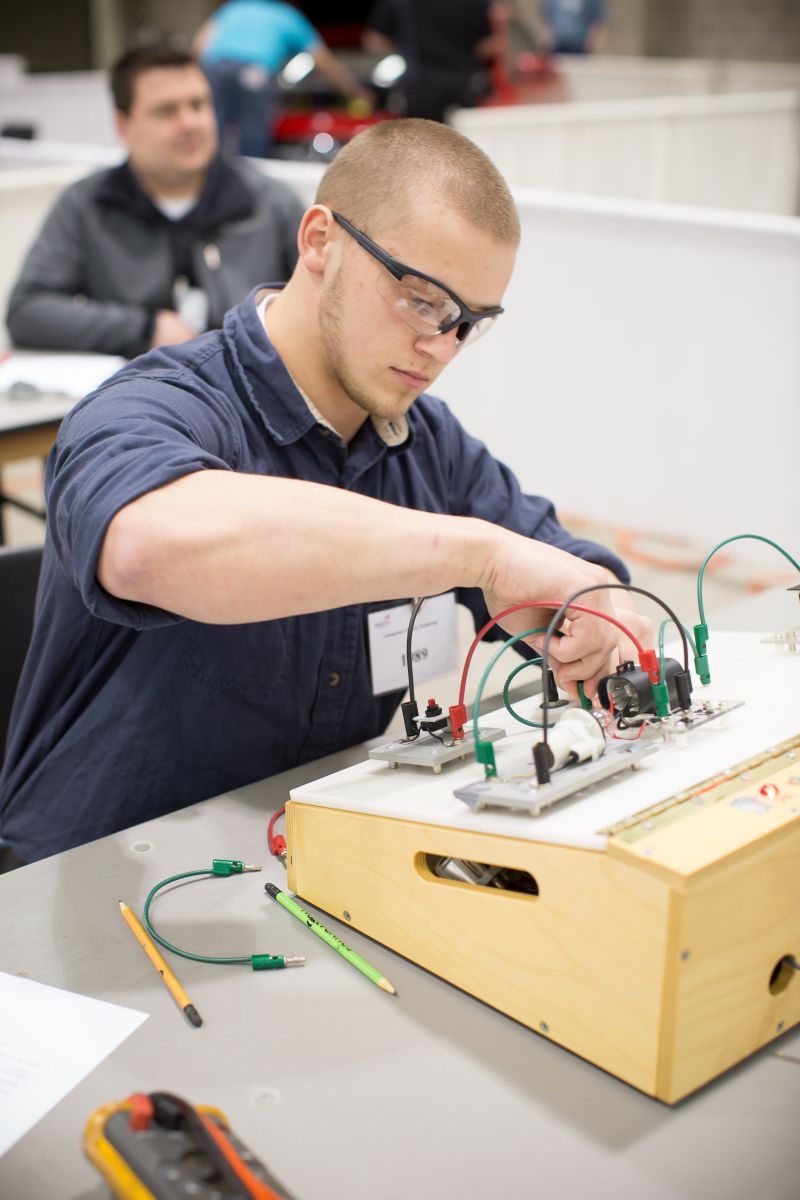Effective STEM Requires Community Partners

This page lists a series of resources and ideas designed to help schools develop formal partnerships with local businesses, and to help businesses develop partnerships with schools. In order to have students develop into STEM literate Wisconsin citizens, we have to all work together! Authentic learning for college and career readiness requires a thorough understanding of what career readiness means. Please, let us know if you have further resources or ideas to add to this collection.
I'm a school, what are some suggestions for starting a partnership?
- Clarify Goals - What are the goals of your STEM program? Which of those goals could the partnership support? How would we know if the partner
- Needs - What are your needs in relation to STEM education programs and student college and career readiness? How do you those are your needs? Can a partnership meaningfully address those needs?
- Possible needs: career awareness, building workforce skills, in-kind donations, mentoring, more students pursuing post-secondary education, community building
- Evaluation- How will you know if the partnership is successful? What outcomes do you expect? It's important to be realistic on the timeframe for when you'd expect these outcomes.
- Possible measures: post-secondary entrance rates, program participation, learning measures, surveys of students/business/community
- Activities - What activities could the partnership involve? If business employees are going to visit your school and share information or support an activity, make sure you meet first to establish best practices. You want guests to feel comfortable and students to be engaged. Further ideas:
- Mentoring
- Share expertise w/ students or teachers
- Advisory boards
- Tutoring/volunteering
- In-kind donations
- Internships for students or teachers
- Training at business site or at school
- Capstone projects (support and judging)
- Field trips (tours) w/ a specific purpose
- Experts lead school-based activities
- Service-learning
- Support relevancy
- Finding a Partner - Local businesses make the best partners, particularly where employees have children in your school. Finding someone connected to the business is always better than a cold-call. A letter asking to meet and discuss partnering can be effective as well. In meeting with a potential partner, it's essential to have very specific asks in mind (and asking for money is not suggested - let the partnership develop over time and then determine if that's appropriate).
- Working Together - One key part is having clear communication - who's communicating with whom by when? And, who is in charge of getting particular tasks done? In the beginning, it's essential to have both sides provide regular feedback and have open dialogue about how things are going. Once a relationship is established an annual review might suffice. Creating a formal letter of agreement can be useful to establish and clarify expectations. Some ideas for what to put in that letter can be found here.
- Sustainability - Many partnerships also fail due to turnover - a sustainability plan should be established. Ideally, the partnership shouldn't just be with one teacher.
I'm a business, what are some suggestions for starting a partnership?
- Clarify Goals and Values - What are your goals as a business in partnering with schools? How do those goals line up with the core values of your business? Is it okay if the partnership has no impact on your bottom line in the near term?
- Needs - What are your needs as a business?
- Possible needs: brand and product awareness, build a workforce pipeline, increase community awareness of STEM careers, raise prestige of alternatives to four-year college degrees, raise prestige of jobs that might be considered "blue collar"
- Evaluation - What measures of success within the partnership would be meaningful for you business? How or can you track those, considering school privacy issues? It's important to be realistic on the timeframe for when you'd expect these outcomes.
- Possible measures: contact hours, successful student internships with company, surveys of students/community, program participation rates, (long-term) rates of applications for open positions
- Activities - What activities will the partnership involve? If considering a presentation at the school, work with teachers to ensure it will be interactive and engaging for the students. Other ideas can be found here.
- Working Together - One key part is having clear communication - who's communicating with whom by when? And, who is in charge of getting particular tasks done? Is it joint management, or is one party the lead in running the show? In the beginning, it's essential to have both sides provide regular feedback and have open dialogue about how things are going. Once a relationship is established an annual review might suffice. Creating a formal letter of agreement can be useful to establish and clarify expectations. That letter or "MOU" might include:
- Goals, purpose, and expectations
- Timeline
- Duration/frequency
- Resources - what is each contributing? (finances, time, etc.)
- How is it two-way?
- Contact info
- Confidentiality or non-disclosure if needed
- Insurance/liability
- Proper signatures
- Sustainability - Many partnerships also fail due to turnover - a sustainability plan should be established. Establish an employee to assume the lead communication role in case the lead contact leaves the company.
Contact: stem@dpi.wi.gov or see the DPI STEM Leadership Team page